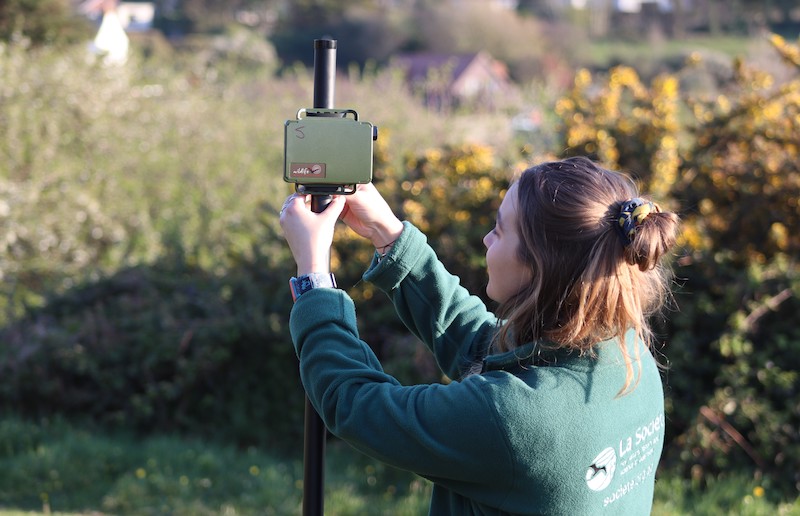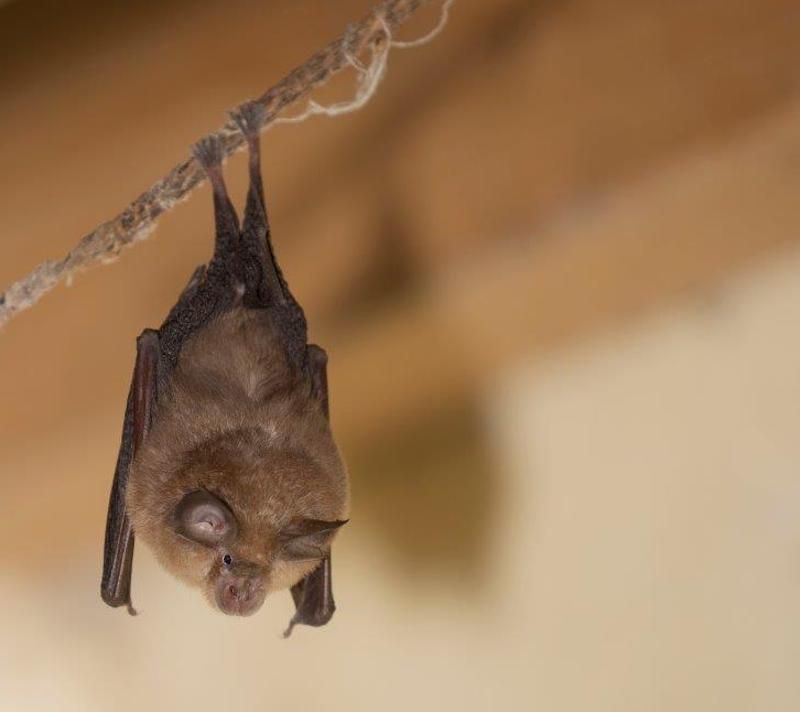


A citizen science project has discovered an endangered species of bat on the island for the first time.
Volunteers taking part in the Bailiwick Bat Survey recorded sightings of the Lesser horseshoe bat.
Analysis of that data has confirmed the discovery of the Rhinolophus hipposideros from two recordings of a volunteer's survey. The species was first recorded at 20:59 on 13 April and again at 00:40 on 14 April at a site in St Martin's.
Lesser horseshoe bats forage largely in broadleaved woodland as well as along mature treelines and hedgerows. The horseshoe bat species also actively avoid light, so woodland and less populated areas may be preferred by these species, which is consistent with the location where they were recorded around the south coast cliffs.

Pictured: The Bailiwick's first large-scale survey of our bat population was launched in April as a citizen science project.
Not long after these first sightings, organisers of the Bailiwick Bat Survey received confirmation of a second record. A number of other recordings will be manually checked at the end of the season.
Lesser horseshoe bats are rare in the Britain and threatened by a number of factors, including the disturbance or destruction of roosts, changes in agricultural practices (such as the increased use of insecticides) and the loss of suitable foraging habitats.
Charles Hurford, Secretary of La Société’s Bat Section, said it is "a very exciting and interesting observation" that raises further lines of inquiry.
"While I am delighted to hear this news, it creates a lot of questions for me. How did it get here? Where did it come from? Is it resident on Guernsey and if so, is there a breeding colony here?
"We may never know the answers of these questions but it highlights the value of the Bailiwick Bat Survey and how important it is to protect and manage our natural heritage so we can continue to have discoveries such as this.”

Pictured: A Lesser horseshoe bat roosting (Credit: Daniel Hargreaves).
Elizabeth Sweet, Manager of the Guernsey Biological Records Centre, said the role of bats in local habitats is "very important and often misunderstood".
"22% of mammals are bats and they provide important ecological and economic services. In the UK, some bats are “indicator species”, because changes to these bat populations can indicate changes in aspects of biodiversity.
"This is one reason we’re surveying and learning more about our Bailiwick Bats as they can tell us a lot about the health of our islands."
Andy McCutcheon from Agriculture, Countryside & Land Management Services said citizen science can help engage islanders in their natural environment.
"The findings of the Bailiwick Bat Survey are key to understanding more about our bat species, their populations and their inter-actions with the landscape. Critically these findings will start to fill a very big gap in our knowledge about local bats, knowledge which is essential if we are to ensure sustainable populations for our future."
Alderney Wildlife Trust, Sark School, Guernsey Museum at Candie, Guille-Allès Library, and the Guernsey Biological Records Centre have all volunteered to be ‘Bat Centres’.
Each bat centre holds the detectors and associated equipment. Volunteers can borrow a bat detector kit with all the instructions and equipment required to take part in the survey.
Volunteers have been asked to pick a square (measuring 500 x 500 metres) from an online map, and to place a static bat detector in typical habitat in their chosen square for a four-night period twice per year, once between now and mid-July, and then again to record at the same location between mid-July and the end of the October.
The bat detector automatically records bat calls to a memory card every time a bat passes throughout a night. After four nights’ recording, volunteers are then able to upload their recordings, return the detector kit, and the automated sound analysis will identify each sound recording to species and send the results to volunteers within hours.
The project is set to last four years, so there is still time to get involved. Find out more HERE.
Pictured top: A Lesser Horseshoe Bat emerging from a cave. Lesser horseshoe bats traditionally used caves for roosting however they now tend to roost in old buildings such as larger older houses, churches and barns. They are one of Britain’s smallest bats measuring around the size of a plum and weighing under 10 grams (Credit: Daniel Hargreaves).
Comments
Comments on this story express the views of the commentator only, not Bailiwick Publishing. We are unable to guarantee the accuracy of any of those comments.